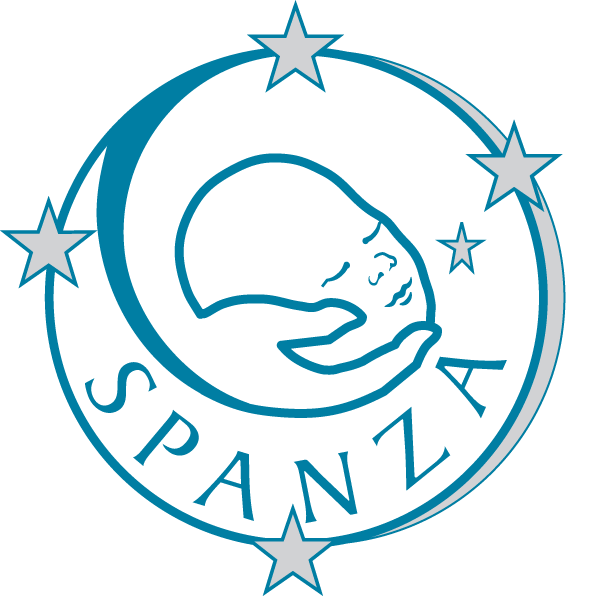Awake Supraglottic Airway Placement in Pediatric Patients for Airway Obstruction or Difficult Intubation
Insights From an International Airway Registry (PeDI)
Anesthesia Analgesia
Submitted May 2025 by Dr Henrik Hack
Read by 668 Journal Watch subscribers
Study type:
A large, prospective, observational study using data from the international, multi-centre PEDI registry.
Data was contributed from 18 institutions.
Subject:
All cases of awake supraglottic airway (SGA) placement (in anticipation of a difficult airway and endotracheal intubation) in children from February 2013 to June 2023.
It should be pointed out from the outset that the study looks at various intubation techniques used following the placement of an SGA, including both flexible scope guided intubation and the removal of the SGA (having confirmed ventilation or otherwise) followed by the use of other intubation techniques (see below). This wasn’t clear to me from the outset (probably due to an incorrect assumption from me that it would be dealing with intubation techniques utilising the SGA as a conduit!). I mention this at the start so as to avoid any confusion from readers.
Results:
Demographic data. There were 8061 cases entered into the PEDI registry during the study period. A total of 93 patients (undergoing 95 separate attempts at awake SGA placement) were analysed.
Median (Range, IQR) age was 37 days (0-17.6 years, 18d- 4.3 m) and weight 3.7kg (1.6-46.7kg, 3-5.5kg).
There were 39 neonates included; 16 children were over 2years of age.
80 (84%) had either a disease or syndrome known to be associated with difficult intubation (DI) or had been a previous DI. Of these, 49 (52%) had Pierre Robin sequence (PRS).
SGA Placement. In 62 (65%) of cases the SGA was placed unsedated. Topical lignocaine (method(s) of application not described) was used in only 20 (33%) of cases. Thus, in 42 cases no additional technique was used. The median age of this group was 32.5d but the oldest child was 14 years. Ventilation was described as “adequate” (>5ml/kg) in 50 (81%) cases, inadequate in 11 (18%) & “impossible” in 1 (2%).
“Light” sedation was used in 25 (26%). “Light” sedation was defined as the use of either fentanyl, morphine, dexmedetomidine or low dose (<0.5mg/kg) ketamine. Dosages of these drugs were not published. Additionally, topical lignocaine was administered in 4 (16%) cases. Again, the median age was low at 40d but the Range was 3d -17.6years. Adequate ventilation was attained in 24/25 (96%) cases with only 1/25 (4%) described as inadequate.
“Deep” sedation was used in 8/95 (8%) cases. “Deep” was defined as the use of ketamine >0.5mg/kg or propofol up to 2mg/kg. None of these cases received topical lignocaine. The median age of this group was 8 years. Ventilation was adequate in 7 (88%) and inadequate in 1 (12%).
Overall, SGA placement was described as “easy” in 89 (94%) of cases. In these cases, ventilation was adequate in 78 (88%) and inadequate in 11 (12%). Where placement was described as “difficult” (6 cases (6%)) adequate ventilation was achieved in only 3 (50%) cases. Ventilation was inadequate in 2 (33%) or impossible in 1 (17%) case. The median age for all inadequate and impossible ventilation cases was 38d but with a range of 0-13.8 yrs.
SGA types. SGA brand used included AirQ 57 (60%), LMA unique 18 (19%) and Ambu AurOnce or AuraGain in 18 (19%). This presumably reflected institutional choices at the time. Overall, adequate ventilation was achieved in 81 (85%) cases. No comment was made regarding differences between SGA’s.
Intubation attempts. Overall in 35/95 (33%) cases the child was intubated successfully at first attempt, with 94 (99%) eventually being able to be intubated. The median (IQR, range) number of attempts was 2 ((1-3), 1-16)).
Successful intubation ≤2 attempts was achieved in 61/95 (64%) cases. In 11/95 (12%) cases more than 6 attempts were needed to intubate the child.
Neuromuscular blockade was used before first intubation attempt in 24/66 (36%) cases where the information was available.
Flexible scope via the SGA was the most popular first attempt technique. It was also the most successful first attempt success technique (44/94 (47%) of cases).
Direct laryngoscopy was the second most popular intubation technique used, 20/95 (21%), but was successful in only 4 (4%) cases.
Standard blade VDS was used in 16 (17%) cases and was eventually successful in all cases. Similarly hyperangulated blade VDS was used in 8 (8%) of cases and successful in 7 of these.
Other techniques stated included combinations of equipment and skills sets.
There was one failed intubation. This baby had adequate ventilation whilst spontaneously ventilating with an SGA in situ. Ventilation became difficult once NMB was given. Numerous intubation attempts failed but the child resumed spontaneous ventilation after NMB reversal and was subsequently woken up.
Complications. There were no cardiac arrests or deaths. Complications occurred in 9 (9%) cases including hypoxia (SpO2 <90% for >1minute) in all 9 cases.
Comments
The use of an SGA has been advocated both as a rescue device for failed ventilation and oxygenation in children or as a subsequent conduit for flexible scope guided intubation. Indeed the theoretical ability to oxygenate and anaesthetise using volatile anaesthetics is attractive to help prevent hypoxaemia (and awareness) whilst minimising complications and number of intubation attempts.
This report provides ample “real world anaesthetic practice” evidence to support these recommendations in all age groups.
Since the registry is multi centre & observational it is perhaps inevitable that there are some anaesthetic practises that this reviewer finds surprising:
-
As expected many of the cases are small babies with recognised syndromes such as PRS. This would be familiar to many readers. The use of awake SGA placement in older children, including teenagers, was a surprise to me considering the already well established awake Flexiscope guided nasal intubation (usually with topicalisation and sedation) technique. It was interesting to read that the one failed intubation, already described, had an awake nasal FB guided intubation at a later date.
-
A significant proportion of small babies had an SGA placed without sedation or topicalisation with lignocaine. This surprised me and left me wondering whether such practice, presumably based on the fear of “losing the airway” might actually be counterproductive since it might increase the risk of airway trauma and laryngospasm? This might be supported by the finding that difficult placement and inadequate ventilation were more likely to occur in younger, “unprepared” babies? Unsurprisingly, sedation and lignocaine were more likely to be used in older children.
-
The decision to establish and effective airway awake and then remove it to pursue an alternative intubation technique to a flexiscope guided one down the SGA is interesting and probably reflects a local institution’s experience and availability of specific equipment. Although the ‘scope down the SGA’ technique was the most successful it still only achieved a 47% first pass success , suggesting either technical deficiencies and/or perhaps inadequate anaesthesia or topicalisation once the SGA has been successfully placed?
Overall the paper provides useful data to warrant the current recommendation of considering an SGA (but with no specific evidence for any single brand of SGA) for rescue airway or elective use in cases of know or predicted DI. However the subsequent aim of successful intubation in ≤ 2 attempts remains elusive, even in expert hands, whatever the chosen technique was.



